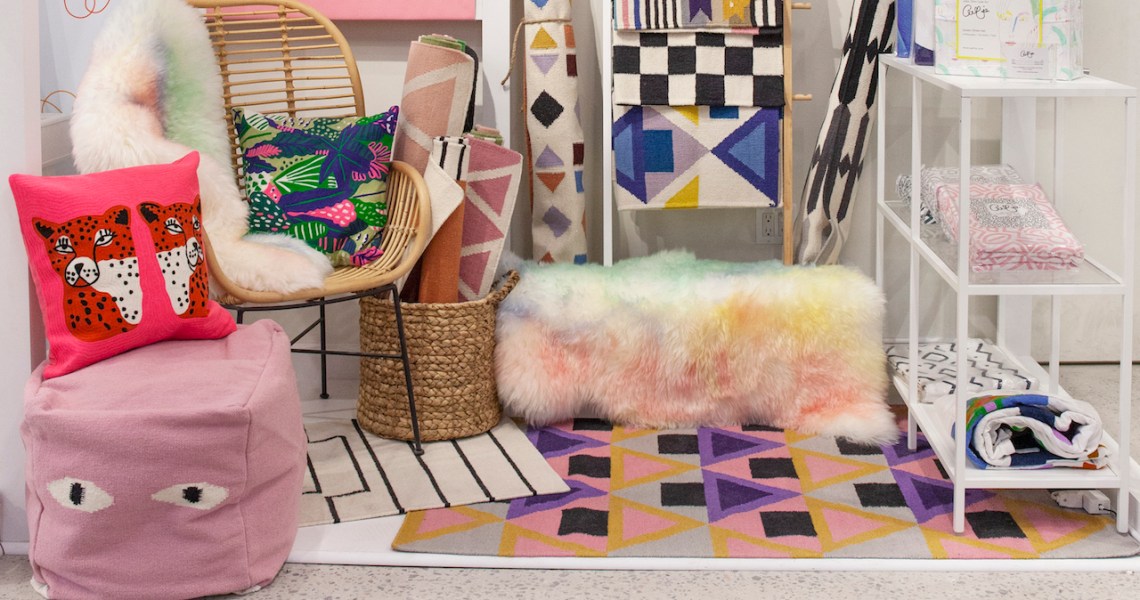The second floor of Showfields, the newly opened multi-brand storefront in New York City’s NoHo neighborhood, is filled with seven miniature storefronts of small DTC brands that run the gamut of fashion to beauty to homeware. They range from brands that just launched a few months ago to brands that are already sold in hundreds of stores.
The unifying theme of these brands: They are all merchants on Shopify’s online platform.
Shopify, the Canadian e-commerce platform that powers thousands of brands’ online stores, partnered with Showfields to give seven DTC brands the chance to experiment with physical retail in a low-risk environment. Shopify curated the brands from its massive list of brand partners, sponsoring a small space for each on Showfields’ second floor.
“Going into retail is harder today than ever before,” said Tal Zvi Nathanel, co-founder of Showfields. “If someone is already getting their butt up off of the coach, they want something more than a standard experience. A lot of the brands here would have a very hard time operating in this kind of space, but they can, because we take care of most of it for them.”
Showfields provides necessities and services including store design, security and tech for purchase transactions. Leases for brands range from $6,000 to $20,000 per month.
Showfields’ partnership with Shopify brings together two companies with similar goals, but from different worlds. Showfields’ goal, according to Zvi Nathanel, is to give smaller brands without the resources for large-scale operations the chance to have their own physical storefront. Shopify looks to do the same thing in the online world.
By partnering with Showfields, Shopify is taking a big step toward the world of physical retail, something the company has been interested in exploring more over the past few years.
Ad position: web_incontent_pos1
“This is really an experiment to see what’s possible,” said Ian Black, Shopify’s head of commercial retail. “We’ll learn along with the brands and see where it goes. Writ large, what we are trying to do is provide a lot of different ways for brands to make the journey to selling offline.”
For many of the brands involved, this opportunity is incredibly valuable. Retail is a notoriously difficult and cost-prohibitive option for brands, particularly smaller, newer brands that primarily operate online. New York, in particular, is one of the most valuable retail markets, and it also has one of the highest barriers to entry.
“Rent is the biggest thing,” said Hannah Choi, CEO of beauty brand Baby Tress. “We’ve had discussions about retail strategy, and we all agreed that if we were to do retail, we wanted to be very selective. We wanted to be surrounded by like-minded brands who are purpose-driven, with a greater mission beyond making money. But that’s really difficult for a new brand.”
Baby Tress was just founded at the end of 2018 and has little retail or offline business experience. But its product is one that requires a physical experience in order to convince people it is worth it, said Choi.
“We need to be in retail spaces, because this is a product you need to see up close and touch it and play with it,” said Shannon Kennard, account executive at Mama Tress, Baby Tress’ parent company. “Everyone who tries it falls in love with it.”
Ad position: web_incontent_pos2
The importance of physical retail for discovery also depends on the size of the brand. Zvi Nathanel broke the average consumer’s retail experience down into five steps: discovery, consideration, acquisition, evaluation and “sharing the verdict.” For smaller brands like Baby Tress, discovery is what they need the most help with.
But bigger brands need a physical presence more for consideration than discovery. Zvi Nathanel pointed to Quip, one of the largest brands available at Showfields, as a good example. A good amount of people already know what Quip is, but the brand doesn’t offer a lot of opportunity for consumers to try its products. (Quip is not part of the Shopify partnership and has its storefront on the first floor of Showfields.)
Breezy Dotson, co-founder of another of Shopify’s partnered brands, Coco and Breezy, said that selling her brand’s eyewear in its own physical storefront is valuable for another reason: data collection. Coco and Breezy’s eyewear is already sold in 450 eye doctor and optical shops around the country, but the brand gets minimal useful data from these sales beyond whatever product is selling best.
“We are already sold in 450 shops, but we can’t collect any valuable data,” Dotson said. “Here, we can collect data and see how people are shopping our products up close. Sizing is where we need a lot of data, since we don’t have a lot of information there. That way, we can make decisions about how much we need to produce in larger sizes or smaller sizes.”
Ultimately, physical retail seems an unavoidable destination for many online DTC brands today. As the online space gets increasingly crowded and it becomes more difficult to stand out from the legion of brands on Instagram, physical retail provides a rewarding, if imposing, chance at breaking out from the crowd.
“We wanted to invite people who represent all the different steps along the path, from online to offline,” Black said. “We invited all New-York-based brands that represent major categories where we see fastest growth: fashion, beauty and homeware. Some started in the last few months and are selling in-person for the first time, and others have been around for a few years and are a bit further down along the line. It’s just so common now that when you reach a certain size and scale online and you’re looking for growth, you can find that most easily in-person and in-store.”




